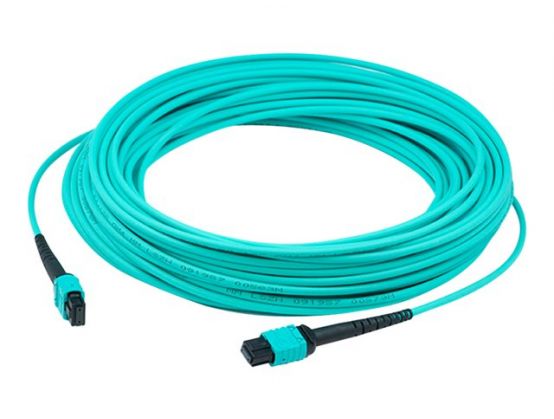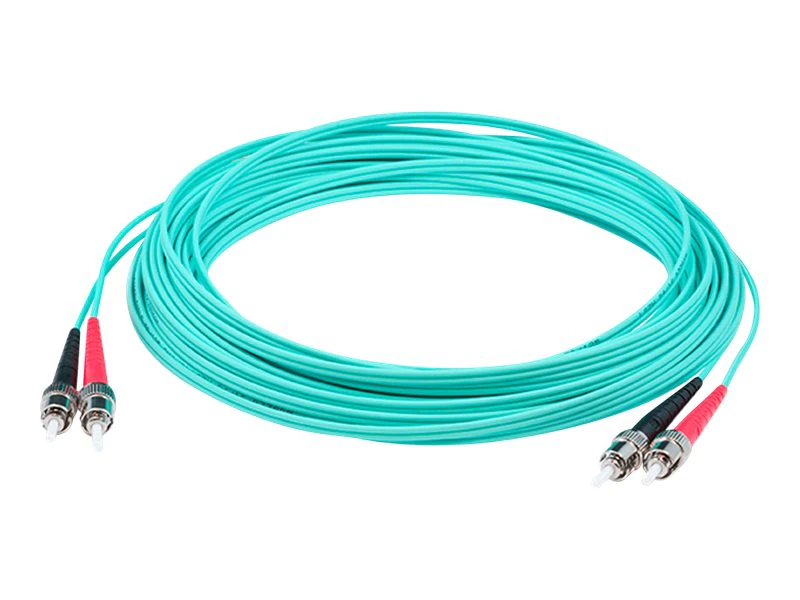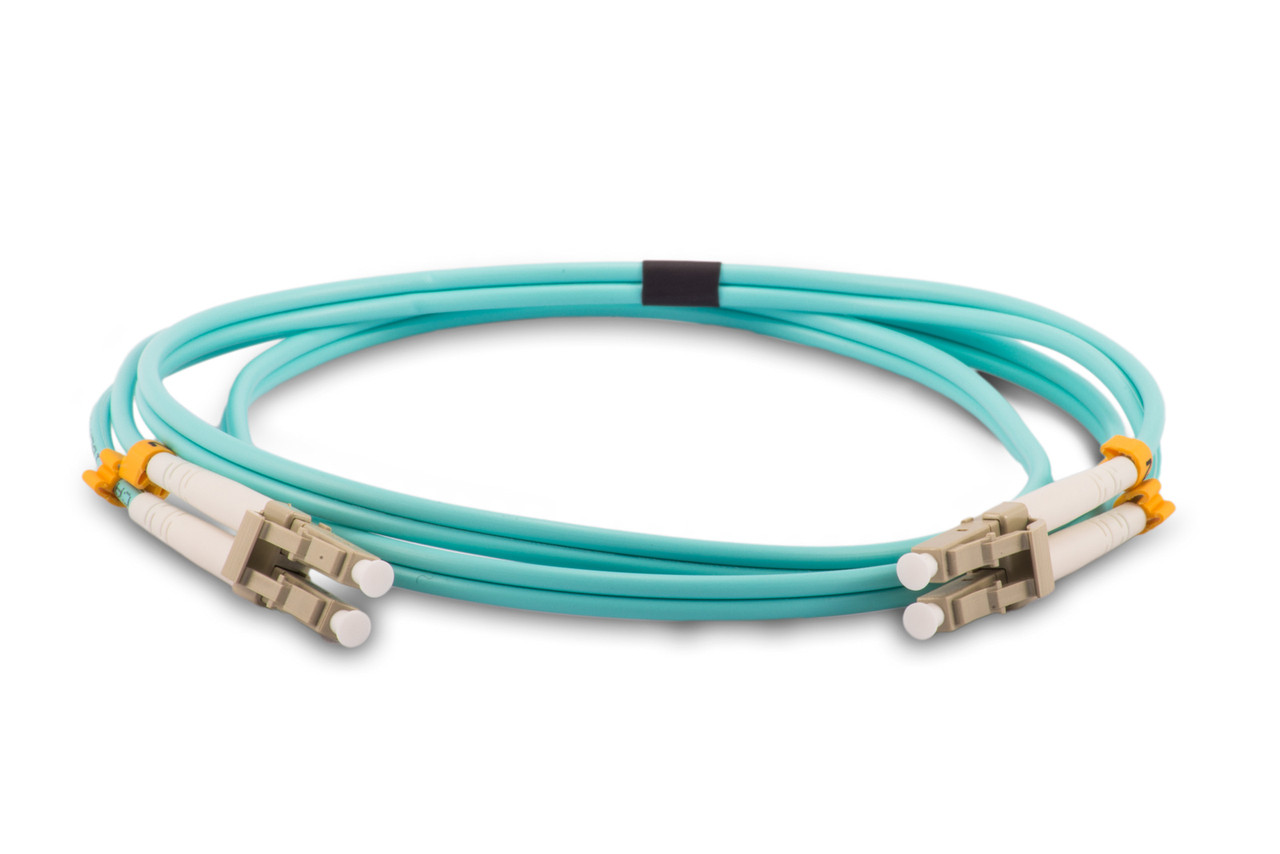Understanding Multimode Aqua Patch Cable for High Bandwidth Fiber Optic Connections

Understanding Multimode Aqua Patch Cables
MPO Connectors and Fiber Optic Cable Types
In the realm of high bandwidth fiber optic connections, patch cables play a pivotal role in ensuring seamless data transmission. When it comes to patch cables, understanding the significance of MPO connectors and different types of fiber optic cables is crucial. MPO connectors are widely used in fiber optic networks for their high-density connectivity, making them essential for efficient data transfer. Additionally, various fiber optic cable types, such as multimode and single-mode, offer distinct advantages based on specific network requirements.
Types of MPO Patch Cables
MPO Connectors and Fiber Optic Cable Types
When it comes to MPO connectors and fiber optic cable types, it's essential to understand their distinct roles in ensuring efficient data transmission within fiber optic networks. MPO connectors, known for their high-density connectivity, are designed to facilitate quick and reliable connections in complex network environments. They are particularly advantageous in scenarios where multiple fibers need to be connected simultaneously.
On the other hand, different types of fiber optic cables, including multimode and single-mode options, offer unique characteristics that cater to specific network requirements. Multimode fiber optics are well-suited for shorter distances and are cost-effective, making them ideal for high-speed data transmission within confined spaces. Conversely, single-mode fiber optics are designed for longer distances and higher bandwidth applications, providing exceptional performance over extended network spans.
Understanding the distinctions between these cable types is crucial for effectively designing and implementing fiber optic networks tailored to specific usage scenarios.
Differences Between Multimode and Single-mode Fiber
Multimode and single-mode fiber optics differ significantly in terms of their core diameter and the way they transmit light. While multimode fibers have a larger core size, allowing multiple modes of light to propagate through the optical fibers, single-mode fibers have a much smaller core size that enables only a single mode of light to travel along the optical axis.
The choice between multimode and single-mode fiber optics depends on factors such as distance requirements, bandwidth needs, and budget considerations. By comprehensively understanding the benefits and limitations of each fiber type, network designers can make informed decisions when selecting the most suitable option for their specific applications.

Bandwidth and Fiber Optic Networks
Importance of Bandwidth in Fiber Optic Networks
Bandwidth is a critical factor in the efficiency of fiber optic networks. It refers to the capacity of the network to transmit data within a given timeframe. The higher the bandwidth, the more data that can be transmitted, resulting in faster and more reliable network performance. Several factors influence bandwidth requirements, including the volume of data being transmitted, the number of simultaneous users, and the specific applications running on the network.
In fiber optic networks, sufficient bandwidth is essential for supporting high-speed data transmission, especially in scenarios where large volumes of data need to be transferred quickly and consistently. Additionally, as technology continues to advance, there is a growing demand for increased bandwidth to accommodate emerging applications such as high-definition video streaming, cloud computing, and virtual reality experiences.
Design of Fiber Optic Networks
When designing efficient fiber optic networks, several considerations come into play. These include assessing current and future bandwidth requirements based on anticipated growth and technological advancements. Best practices for optimizing network design involve implementing redundant pathways to ensure network reliability, utilizing advanced switching and routing technologies for efficient data traffic management, and incorporating scalability features to accommodate future expansion seamlessly.
List:
Assess current and future bandwidth requirements
Implement redundant pathways for network reliability
Utilize advanced switching and routing technologies
Incorporate scalability features for seamless expansion
By addressing these considerations during the design phase, fiber optic networks can be optimized to deliver exceptional performance while effectively meeting evolving bandwidth demands.
Significance of Multimode Aqua Patch Cables
Advantages of Multimode Aqua Patch Cables in Fiber Optic Networks
Multimode aqua patch cables play a crucial role in ensuring efficient data transmission within fiber optic networks. These cables are specifically designed to support high-speed data transfer, making them ideal for applications where rapid and reliable connectivity is essential. The distinctive aqua color of these patch cables signifies their compatibility with enhanced laser-optimized multimode fibers, which are optimized for high bandwidth performance.
One of the primary advantages of utilizing multimode aqua patch cables is their ability to facilitate seamless communication over short to medium distances, making them well-suited for enterprise and data center environments. Their enhanced capability for high-speed data transmission allows organizations to maintain optimal network performance while supporting the growing demand for bandwidth-intensive applications.
Moreover, the use of multimode aqua patch cables contributes to cost-effective network solutions, as they offer an efficient means of achieving high bandwidth connectivity without the need for extensive infrastructure investments. This affordability makes them an attractive option for businesses seeking to enhance their network capabilities while managing costs effectively.

Maximizing Data Transmission with Patch Cables
In the realm of fiber optic networks, the use of patch cables, especially the versatile multimode aqua ones, is instrumental in maximizing data transmission efficiency. These patch cables serve as the essential link between network components, ensuring seamless and high-speed connectivity within the fiber optic infrastructure. By incorporating patch cables strategically, organizations can optimize their network performance and meet the escalating demands for bandwidth-intensive applications. The utilization of patch cables, including those specifically designed for multimode aqua fibers, plays a pivotal role in sustaining reliable and efficient data transmission across diverse network environments.
See Also
Understanding ABS Module: A Key Component for FTTH Applications
Exploring the Options for Preconnectorized Drop Cables with SC APC Connectors in White Color
Exploring the Benefits of Yellow Cables with LSZH Sheath for Singlemode OS2 Fiber Optic Networks
Exploring Outdoor Fiber Optic Connectivity: ODVA LC Connector, Armored Cable, and Duplex Options
Exploring the Advantages of Duplex and Branch Cable in Fiber Optic Networks
About US
Follow Us
AnetFiber company's main products are indoor and outdoor optical fiber cables, outdoor waterproof pre-connected fiber-to-the-home products, PLC optical fiber splitters, optical fiber jumpers and pigtails, MTP®/MPO high-density big data product solutions, optical fiber field quick connectors and research and development molding, injection molding and production of optical fiber distribution boxes, optical fiber chassis cabinets, the market has expanded to the world, Europe, America, Asia, the Middle East and Latin America.
Address
Shenzhen City, Baoan District, Yanluo Street, Tangxiayong Community, Yangyong Industrial Road, Tonggangda New Energy Vehicle Park 406
Contacts
+86 199 2655 3586

